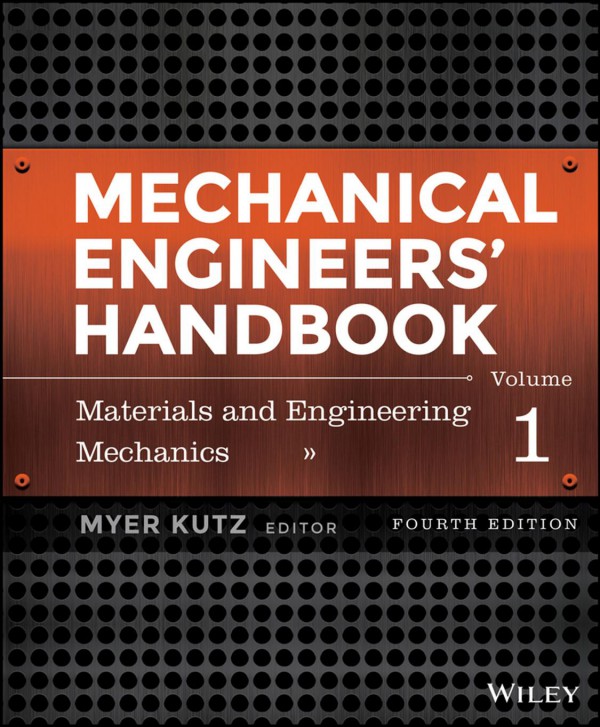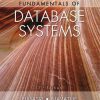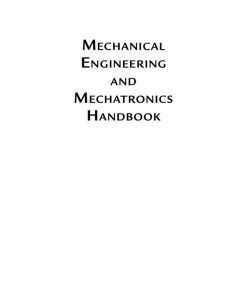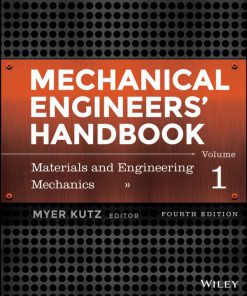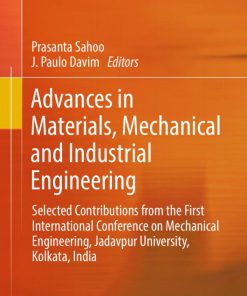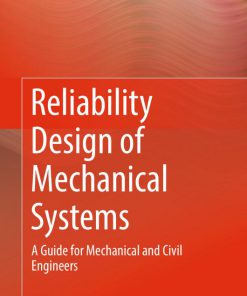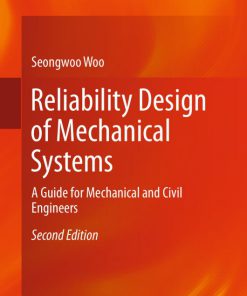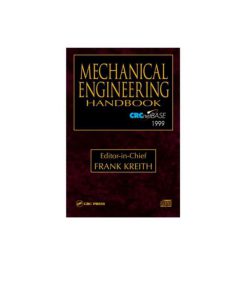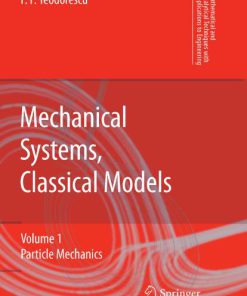Mechanical Engineers Handbook Materials and Engineering Mechanics Volume 1 4th Edition by Myer Kutz 1118112822 9781118112823
$50.00 Original price was: $50.00.$25.00Current price is: $25.00.
Authors:Myer Kutz , Series:Mechatronics Engineering [118] , Author sort:Kutz, Myer , Languages:Languages:eng , Published:Published:Dec 2015 , Publisher:Wiley
Mechanical Engineers Handbook Materials and Engineering Mechanics Volume 1 4th Edition by Myer Kutz – Ebook PDF Instant Download/Delivery. 1118112822, 9781118112823
Full download Mechanical Engineers Handbook Materials and Engineering Mechanics Volume 1 4th Edition after payment
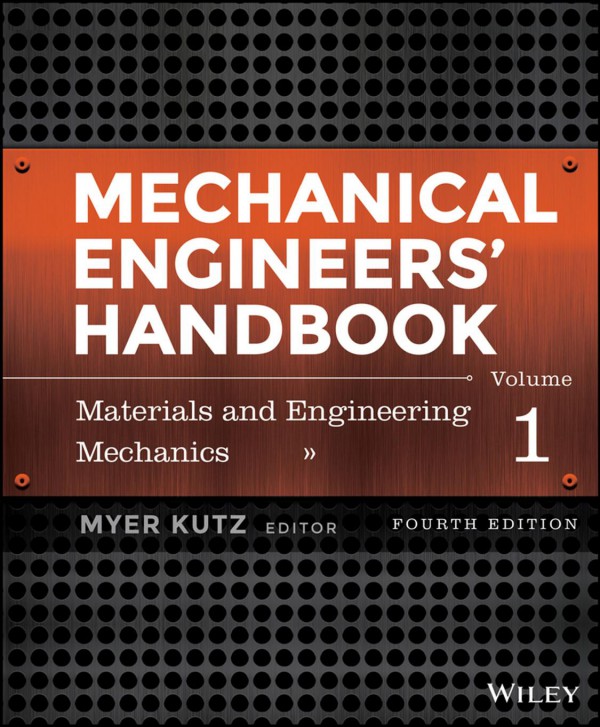
Product details:
ISBN 10: 1118112822
ISBN 13: 9781118112823
Author: Myer Kutz
The original concept behind publishing the Mechanical Engineers’ Handbook was to provide a single source for all critical information needed by mechanical engineers in the diverse industries and job functions they find themselves. No single engineer can be a specialist in all areas that they are called on to work and the handbook provides a quick guide to specialized areas so that the engineer can know the basics and where to go for further reading. Kutz’s handbook was positioned to provide discussion, examples, and analysis of the topics covered as opposed to the straight data, formulas and calculations provided by other handbooks. Because of the widening breadth of subjects covered and specialization required from engineers we have divided the content beyond the single book to four separate, but related books. This first book covers Materials and Mechanical Design. Other books cover; Electronics/MEMS/Instrumentation Manufacturing and Energy & Power. Each book is sold separately or in combination with other volumes as the market requires.
Mechanical Engineers Handbook Materials and Engineering Mechanics Volume 1 4th Table of contents:
Part 1 Materials
Chapter 1 Carbon and Alloy Steels
1 Introduction
2 Steel Manufacture
3 Development of Steel Properties
4 Role of Alloying Elements in Steel
5 Heat Treatment of Steel
6 Classification and Specifications of Steels
7 Summary
Bibliography
Chapter 2 Stainless Steels
1 Effect of Alloying Elements
2 Some Forms of Corrosion
3 AOD, Dual Certification, and Chemistry Control
4 Availability
5 Ferritic Stainless Steel
6 Martensitic Stainless Steels
7 Age-Hardening Martensitic Stainless Steels
8 Duplex Stainless Steels
9 Austenitic Stainless and Nickel Alloys
10 Welding
Websites
References
Trademarks
Chapter 3 Aluminum Alloys
1 Nature of Aluminum Alloys
2 Advantages of Aluminum Alloys
3 Designation Systems
4 Mechanical Properties of Aluminum Alloys
5 Corrosion Behavior of Aluminum Alloys
6 Machining Aluminum Alloys
7 Finishing Aluminum
8 Applications of Aluminum Alloys
9 Summary
References
Chapter 4 Copper and Copper Alloys
1 Introduction
2 Copper Alloy Families
3 Mechanical Properties of Copper and Copper Alloys
4 Corrosion Behavior
5 Tube and Pipe Products
6 Copper Alloy Sleeve Bearings
7 Standards and Specifications
Additional Information
References
Chapter 5 A Guide to Engineering Selection of Titanium Alloys for Design
1 Introduction
2 Metallurgy of Titanium Alloys
3 Microstructure and Properties of Titanium and its Alloys
4 Manufacturing Processes
5 Final Comments
Bibliography
Chapter 6 Nickel and Its Alloys
1 Introduction
2 Nickel Alloys
3 Corrosion
4 Fabrication
5 Heat Treatment
6 Welding
7 Machining
8 Closure
References
Chapter 7 Magnesium and Its Alloys
1 Introduction
2 Uses
3 Alloys and Properties
4 Fabrication
5 Corrosion and Finishing
6 Recycling
7 Life-Cycle Assessment
References
Bibliography
Chapter 8 A Guide to Engineering Selection of Superalloys for Design
1 Introduction
2 Metals at High Temperatures
3 Properties of Superalloys
4 The Evolution of Superalloys
5 Melting and Casting Practices
6 Component Production
7 Other Aspects of Superalloy Selection
8 Alloy Selection Summary
9 Final Comments
Bibliography
Chapter 9 Thermoplastics, Thermosets, and Elastomers-Descriptions and Properties
1 Introduction
2 Polyolefinic Thermoplastics
3 Side-Chain-Substituted Vinyl Thermoplastics
4 Polyurethane and Cellulosic Resins
5 Engineering Thermoplastics
6 High-Performance Materials
7 Fluorinated Thermoplastics
8 Thermoset Resins
9 General-Purpose Elastomers
10 Specialty Elastomers
References
Chapter 10 Composite Materials
1 Introduction
2 Reinforcements and Matrix Materials
3 Properties and Applications of Composite Materials
4 Applications
Bibliography
Chapter 11 Smart Materials
1 Introduction
2 Piezoelectric Materials
3 Electrostrictive Materials
4 Magnetostrictive Materials
5 Elastorestrictive Materials
6 Electrorheological Materials
7 Magnetorheological Materials
8 Thermoresponsive Materials
9 pH-Sensitive Materials
10 Light-Sensitive Materials
11 Smart Polymers
12 Smart (Intelligent) Gels (Hyrdogels)
13 Smart Catalysts
14 Shape Memory Alloys
15 Unusual Behaviors of Materials
16 Comments, Concerns, and Conclusions
17 Future Considerations
References
Chapter 12 Overview of Ceramic Materials, Design, and Application
1 Introduction
2 Processing of Advanced Ceramics
3 Brittleness and Brittle Materials Design
4 Applications
5 Information Sources
6 Future Trends
References
Chapter 13 Electronic Materials and Packaging
1 Introduction
2 Electronic Materials Packaging
3 Electronic Packaging
References
Chapter 14 Sources of Material Data
1 Introduction and Scope
2 Intended Uses for Data
3 Types of Data
4 Subjects of Data Sources
5 Data Quality and Reliability
6 Platforms: Types of Data Sources
7 Specific Data Sources
Acknowledgments
References
Chapter 15 Quantitative Methods of Materials Selection
1 Introduction
2 Initial Screening of Materials
3 Comparing and Ranking Alternative Solutions
4 Selecting the Optimum Solution
5 Case Study in Materials Selection
6 Materials Substitution
7 Case Study in Materials Substitution
8 Sources of Information and Computer-Assisted Selection
References
Part 2 Engineering Mechanics
Chapter 16 Stress Analysis
1 Stresses, Strains, and Stress Intensity
2 Discontinuities, Stress, and Concentration
3 Combined Stresses
4 Creep
5 Fatigue
6 Beams
7 Shafts, Bending, and Torsion
8 Columns
9 Cylinders, Spheres, and Plates
10 Contact Stresses
11 Rotating Elements
12 Springs
13 Design Solution Sources and Guidelines
References
Bibliography
Chapter 17 Force Measurement
1 Introduction
2 Force Transducers
3 Universal Testing Machines
4 Resonant Element Transducers
5 Surface Acoustic Wave Transducers
6 Dynamometers
7 Optical Force Transducers
8 Magnetoelastic Transducers
9 Force Balance Transducers
10 Force Transducer Characteristics
11 Calibration
Glossary
References
Chapter 18 Resistive Strain Measurement Devices
1 Preliminary Discussion
2 Resistance Metal Strain Gauges
3 Semiconductor Strain Gauges
4 Liquid Metal Strain Gauges
References
Chapter 19 An Introduction to the Finite-Element Method
1 Deformation of a Solid
2 Equilibrium
3 Infinitesimal Linearly Elastic Constitutive Laws
4 Foundations Of The Finite‐Element Method
5 Hilbertian Sobolev Spaces
6 Finite-Element Formulation in Three Dimensions
7 Global/Local Transformations
8 Differential Properties of Shape Functions
9 Differentiation in Referential Coordinates
10 Postprocessing
11 One-Dimensional Example
12 Summary
References
Chapter 20 Failure Models: Performance and Service Requirements for Metals
1 Criteria of Failure
2 Failure Modes
3 Elastic Deformation and Yielding
4 Fracture Mechanics and Unstable Crack Growth
5 Fatigue
6 Creep and Stress Rupture
7 Fretting and Wear
8 Corrosion and Stress Corrosion
9 Failure Analysis and Retrospective Design
References
Chapter 21 Failure Analysis of Plastics
1 Introduction
2 Types of Failures
3 Analyzing Failures
Bibliography
Chapter 22 Failure Modes: Performance and Service Requirements for Ceramics
1 Overview
2 Flaws
3 Fracture Mechanics
4 Strength
5 Delayed Failure
6 Scatter of Strength and Lifetime
7 Design Applying Multiaxial Weibull Statistics
8 Materials Selection for Thermal Shock Conditions
9 Failure at High Temperatures
References
Chapter 23 Viscosity Measurement
1 Viscosity Background
2 Common Units of Viscosity
3 Major Viscosity Measurement Methods
4 ASTM Standards for Measuring Viscosity
5 Questions to Ask When Selecting a Viscosity Measurement Technique
References
Chapter 24 Tribology Measurements
1 Introduction
2 Measurement of Surface Roughness
3 Measurement of Friction
4 Measurement of Wear
5 Measurement of Test Environment
6 Measurement of Material Characteristics
7 Measurement of Lubricant Characteristics
8 Wear Particle Analysis
9 Industrial Measurements
10 Summary
Chapter 25 Vibration and Shock
1 Introduction
2 Modeling of Physical Systems
3 Single Degree of Freedom System
4 Shock Spectrum
5 Multidegree of Freedom System
6 Vibration of Continuous Systems
7 Vibration and Shock Isolation
8 Standards for Vibration of Machines
Nomenclature
References
Bibliography
Chapter 26 Acoustics
1 Introduction
2 Sound Power, Sound Intensity, and Sound Pressure
3 Decibel and Other Scales
4 Weighting Filters
5 Impedance
6 Theory of Sound
7 Reflection, Transmission, and Absorption
8 Hearing Loss
9 Passive Noise Control
10 Active Noise Control
11 Architectural Acoustics
12 Community and Environmental Noise
13 Sound Quality Analysis
14 Nonlinear Acoustics
15 The Human Ear and Hearing
16 Microphones and Loudspeakers
References
Suggestions for Further Reading
Chapter 27 Acoustical Measurements
1 Introduction
2 Fundamental Measures
3 Microphones
4 Sound Pressure Level Measurements
5 Measurement of Sound Isolation
6 Room Acoustics Measurements
7 Community and Environmental Noise
8 Sound Intensity Measurements
9 Sound Power Measurements
10 Sound Exposure Measurements
People also search for Mechanical Engineers Handbook Materials and Engineering Mechanics Volume 1 4th:
r & m materials handling
r & m materials handling inc
quality material handling tulsa
q mechanics of materials
You may also like…
eBook PDF
Mechanical Engineering and Mechatronics Handbook 1st edition by Kumar 9781683928546 1683928547
eBook PDF
Mechanics of Materials 4th Edition by Roy Craig, Eric Taleff ISBN 1119612384 9781119612384

